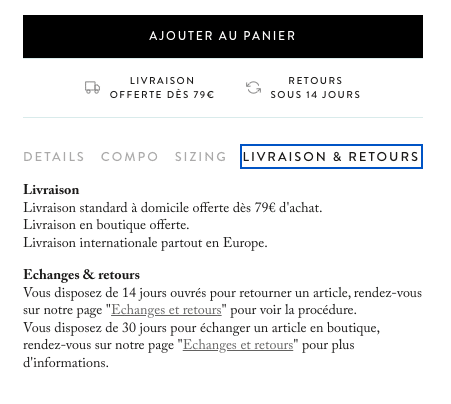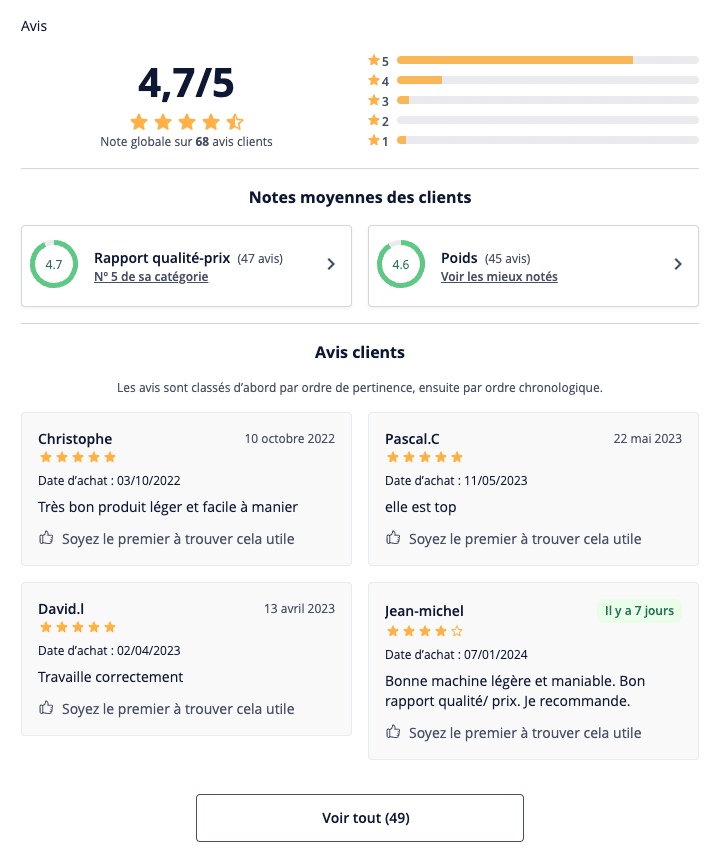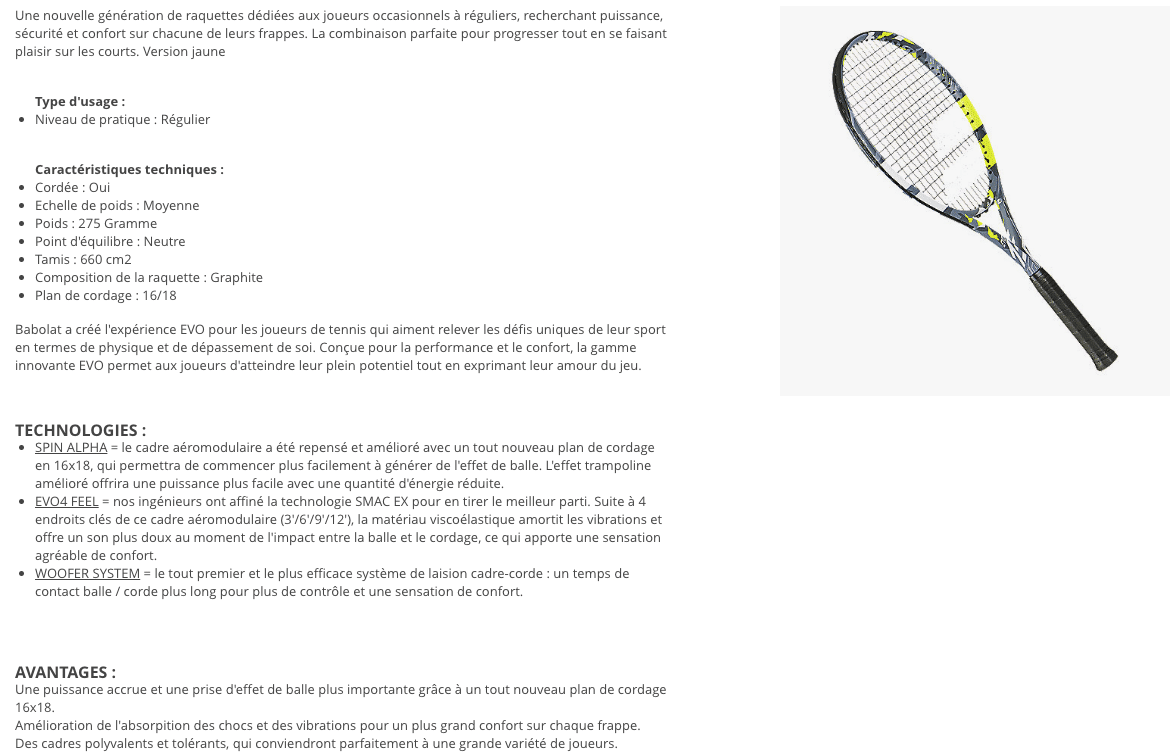E-commerce reassurance elements have become essential tools for building consumer confidence in an ever-changing online shopping environment.
As Internet purchases continue to grow exponentially, consumers are increasingly attentive to the security, reliability and transparency of e-commerce platforms.
In this article, we explore the importance of e-commerce reassurance elements and their impact on consumer confidence, as well as best practices for implementing them effectively.
The importance of reinsurance in e-commerce
When you buy online, you can’t touch, feel or try the product before you buy it.
This can make online shoppers anxious and uncertain about the quality of the product and the reliability of the seller.
That’s why reassurance is so important in e-commerce.
E-commerce reassurance elements are many and varied.
They can include money-back guarantees, customer reviews, trusted brand logos, safety certifications, money-back guarantees and return policies.
By using these elements, you can show your customers that you take their safety and satisfaction seriously, which can encourage them to shop on your website with confidence.
15 E-commerce reinsurance essentials
When you buy online, it’s important to feel confident.
Reassurance elements are key to reassuring customers and convincing them to finalize their purchase on your e-commerce site.
Here are the key reassurance elements you absolutely must have:
1- Payment security
Payment security is a major concern for customers.
To reassure them, you need to use secure payment methods and clearly display the logos of the different payment providers you use.
Security certifications, such as SSL and PCI DSS, reassure online shoppers that their personal and financial information is secure and protected.
2- Clear return and refund policy
A clear, easy-to-understand returns policy is essential to reassure customers.
Money-back guarantees also help reassure online shoppers, as they know they can return the product if it doesn’t meet their expectations.

3- Delivery methods and costs
Delivery methods and costs are important considerations.
You need to offer several delivery methods, and clearly display the carriers and associated costs.

4- Positive customer reviews
Customer reviews are particularly important as they provide social proof of product quality and customer service.
Online shoppers are more likely to buy from a site with good reviews and positive testimonials from satisfied customers.
Subscribing to an application to obtain verified reviews is a plus.

5- Certifications and trust marks
Trust mark certifications and logos, such as those from McAfee or VeriSign, help reassure online shoppers that the e-commerce site is reliable and trustworthy.
You can use these pictograms in a reassurance banner.

6- Up-to-date website
Keeping a website constantly up to date is an essential element in building customer confidence.
That’s why it’s imperative to update your site regularly with the latest news and promotions.

7- “About us” page
A humanized “Who we are” or “About us” page helps reassure customers.
You need to explain who you are, what you do and why you do it.
Don’t hesitate to add photos of “real” people on your team.

8- Contact information
Contact information is essential.
You need to clearly display your contact details on your website: address, telephone number and contact email address.
It’s also a good idea to create a Google Business listing.

9- Privacy policy and personal data management
The privacy policy and RGPD are important elements of customer reassurance.
You need to clearly explain how you manage personal data and post your privacy policy.
10- Accessible legal notices and general terms and conditions
Legal notices and general terms and conditions of sale (GTCS) must be clearly displayed on your site.
Customers expect to find a link to these pages in the footer.

11- Detailed product data sheets
Detailed product information sheets are crucial to building customer confidence.
To ensure this trust, be sure to provide comprehensive sheets, clearly highlighting the precise origin of each product.

12- FAQ to answer all customer questions
Comprehensive Frequently Asked Questions (FAQs) are an invaluable tool for reassuring customers.
Ensure easy access to detailed answers, covering all potential customer queries.

13- News blog
Maintaining an up-to-date blog is a fundamental element in building trust.
Keep your blog up to date by regularly presenting relevant news and explicitly highlighting your expertise in your field.

14- Presence on social networks
Active involvement on social networks plays a significant role in customer peace of mind.
Make sure you’re fully present on relevant social platforms, transparently displaying your accounts and fostering an authentic connection with your audience.

15- Corporate social and environmental actions
Your company’s social or environmental initiatives are essential elements in inspiring confidence.
It is therefore essential to clearly detail the concrete actions you are taking in favor of society or the environment, thus reinforcing the credibility of your commitment.

2 Implementation strategies
When setting up reassurance elements for your e-commerce site, it’s important to consider implementation strategies to maximize their effectiveness.
Here are two key strategies to consider:
1- Effective display of reinsurance elements
For reassurance elements to be effective, it’s important to display them clearly and prominently on your site.
You can place them in strategic locations such as the home page, the payment page or the order confirmation page.
It’s also important to use clear, high-quality visuals to reinforce your site’s credibility.
Here are a few examples of reassurance elements you can display on your site:
- Logos of your trusted partners or suppliers
- Your customers’ opinions and comments
- Safety and quality certifications
- Money-back or satisfaction guarantees
2- Integration into the customer journey
In addition to display, it’s important to integrate reassurance elements into the customer journey to build trust and reduce friction.
For example, you can include reassurance elements in the following steps:
- The product page: displaying customer reviews and comments or quality certifications
- The shopping cart: by displaying money-back or satisfaction guarantees
- The payment page: by displaying logos of trusted partners or security certifications
By strategically integrating reassurance elements into the customer journey, you can increase customer confidence and improve your e-commerce site’s conversion rates.
Measuring the impact of reinsurance
Reassurance is a key element in reassuring customers when they shop online.
However, it is important to measure the impact of reassurance on conversion rates and customer satisfaction.
Conversion rate analysis
Conversion rate analysis is an important measure for evaluating the effectiveness of reinsurance.
Using website analytics tools, you can track conversion rates before and after adding reinsurance.
The results of this analysis can help you determine whether reinsurance is having a positive impact on conversion rates.
Analytics data can also help you identify which reassurance elements have the greatest impact on conversion rates.
For example, you may find that money-back guarantees have a greater impact than customer reviews.
Monitoring customer satisfaction
Monitoring customer satisfaction is also important for measuring the impact of reinsurance.
Customer satisfaction surveys can help you determine whether reinsurance is having a positive impact on customer satisfaction.
Customer feedback can also help you identify which elements of reinsurance are most important to them.
It is important to regularly monitor customer satisfaction to ensure that reinsurance continues to have a positive impact.
If the results of customer satisfaction surveys show a drop in customer satisfaction, it may be necessary to review the reinsurance elements to improve them.
Trends and innovations in e-commerce reinsurance
E-commerce reinsurance is a constantly evolving field, with new trends and innovations emerging every year.
Here are some of the latest trends and innovations in e-commerce reinsurance:
Data-driven insurance
E-commerce insurers are increasingly using data to personalize their insurance offers.
Data collected from customers can be used to assess risk and offer more competitive insurance premiums.
Data can also be used to tailor insurance offers to the specific needs of each customer.
Coverage for emerging risks
With the emergence of new risks in cybersecurity, data protection and online fraud, e-commerce insurers need to be able to provide cover for these emerging risks.
E-commerce insurers are currently working to develop insurance products that cover these emerging risks.

Collaborative insurance
E-commerce insurers are also working to develop collaborative insurance products that allow customers to group together to buy common insurance.
This type of collaborative insurance can provide more comprehensive coverage at a lower cost to customers.
Blockchain-based insurance
Blockchain technology is increasingly being used in e-commerce reinsurance.
E-commerce insurers are using blockchain to store customer data securely and transparently.
Blockchain can also be used to automate claims processes, which can reduce costs and claims processing times.
AI-based insurance
Artificial intelligence is increasingly used in e-commerce reinsurance.
E-commerce insurers are using AI to analyze customer data and assess risk.
AI can also be used to automate underwriting and claims processes, which can reduce costs and claims processing times.
To conclude on the elements of e-commerce reassurance
In conclusion, e-commerce reassurance elements play a crucial role in building consumer confidence in online platforms.
By implementing effective reassurance strategies, companies can not only reassure potential customers, but also increase conversion rates and build customer loyalty.
It is essential for e-commerce players to recognize the importance of these elements and proactively integrate them into their overall strategy to ensure the long-term success of their online business.
If you need help setting up your e-commerce reinsurance strategy, please contact me today to discuss it.


